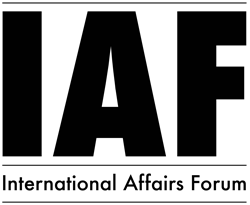| Sun. July 06, 2025 |
 |
|
||
|
||||
| ||||

Since the emergence of COVID-19 vaccines in December of 2020, there has been great inequality in global vaccine distribution. Only 1% of citizens of low-income countries and 10% of citizens in middle-income countries are vaccinated due to lack of vaccine supply.[1] In contrast, the rate of vaccination in high-income countries is more than 50% because they are able to buy surplus vaccines.[2] As the virus continues to spread, new variants will emerge, which will impact not only developing countries but also the U.S. and our allies.
Many proposals and initiatives have been discussed to address this issue. What follows are some of the most relevant:
- Covax: The goal of Covax was to create a fund donated to by rich and poor countries to place orders ahead of time for vaccines.[3] These countries would then share the vaccines equitably and vaccinate their country’s most vulnerable first. Instead, wealthy countries rushed to buy the doses first.[4] Although the program has raised $11 billion, this is far from their initial ask of $18 billion.[5] Advocates estimate that this could result in 1.25 million lives lost.[6] Covax now relies on using doses donated by rich countries that often are close to their expiration date and sometimes cannot be used.[7] They also are distributing cheaper, less effective vaccines.[8]
- TRIPS Waiver: The U.S., EU, India, and South Africa have drafted a proposal on an intellectual property waiver for COVID-19 vaccines.[9] It advocates for the waiving of some provisions of the Trade Related Aspects of Intellectual Property Rights Agreement which WTO members all follow. The proposal is set to be refined and brought to the 164 member countries.[10] It already has the support of 100 countries worldwide. All member countries must agree for the waiver to be enacted. The waiver authorizes sharing of "patented subject matter required for the production and supply of COVID-19 vaccines without the consent of the right holder to the extent necessary to address the COVID-19 pandemic.”[11]
- Voluntary Licenses of Vaccines: Some have argued that voluntary licenses of COVID vaccines could be used rather than an overarching intellectual property waiver. However, this option would not meet the level of demand.[12] Because companies are the ones who decide the terms of these licenses, they are usually reserved for countries that can afford them.[13] The same issue of inequality in vaccine distribution arises again. Most companies have not begun licensing their vaccines because of the lack of financial incentives.[14] None have contributed to the WHO Technology Access Pool by sharing information about their vaccines protected by IP.[15]
- Compulsory Licensing: This type of licensing by developing countries will also not meet the demand. It is too slow of a process to address the quickly changing pandemic.[16] In this process, “each patent license must be negotiated separately by each country and for each product based on its own merit.”[17] The historical data does not predict success, as “from 1995 to 2016, 108 compulsory licenses were attempted and only 53 were approved.”[18] TRIPS also prohibits these licenses from being used for mainly exported goods meaning low-income countries could not help neighboring countries.[19] Compulsory licenses are mostly used for patents while COVID-19 vaccines usually “have other types of IP, including trade secrets, that are integral for production.”[20]
As evidenced by the limitations of Covax, voluntary licenses, and compulsory licenses, the proposed intellectual property waiver is the best available option for combatting vaccine distribution inequality. Developing countries already have the capabilities to produce vaccines, they are just lacking access to information on already created, effective vaccines. Vaccine production lines are already in place in many low-income countries. “India, Egypt, and Thailand are already manufacturing viral vector or mRNA-based covid-10 vaccines.” China is producing its own, less effective vaccines. The U.S. must continue to actively support efforts to pass this TRIPS waiver. It must work to achieve its goal, whether it be by subsidizing vaccine-producing companies or offering incentives to WTO members who oppose the waiver.
Nora Heffernan is a sophomore at the George Washington University studying International Affairs and Spanish. Her region of interest is Latin America.
[1] Amy Maxmen, “The Fight to Manufacture Covid Vaccines in Lower-Income Countries,” Nature News (Nature Publishing Group, September 15, 2021), https://www.nature.com/articles/d41586-021-02383-z.
[2] Ibid.
[3] Adam Taylor, “Why Covax, the Best Hope for Vaccinating the World, Was Doomed to Fall Short,” The Washington Post (WP Company, March 22, 2022), https://www.washingtonpost.com/world/2022/03/22/covax-problems-coronavirus-vaccines-next-pandemic/.
[4] Ibid.
[5] Ibid.
[6] Ibid.
[7] Ibid.
[8] Ibid.
[9] Emma Farge and Andrea Shalal, “U.S., EU, India, S.africa Reach Compromise on COVID Vaccine IP Waiver Text,” Reuters (Thomson Reuters, March 16, 2022), https://www.reuters.com/business/healthcare-pharmaceuticals/us-eu-india-s-africa-reach-tentative-pact-covid-vaccine-ip-waiver-sources-2022-03-15/.
[10] Ibid.
[11] Ibid.
[12] Parsa Erfani et al., “Intellectual Property Waiver for Covid-19 Vaccines Will Advance Global Health Equity,” The BMJ (British Medical Journal Publishing Group, August 3, 2021), https://www.bmj.com/content/374/bmj.n1837.
[13] Ibid.
[14] Ibid.
[15] Ibid.
[16] Ibid.
[17] Ibid.
[18] Ibid.
[19] Ibid.
[20] Ibid.
| Comments in Chronological order (0 total comments) | |
| Report Abuse |
| Contact Us | About Us | Donate | Terms & Conditions |
|
All Rights Reserved. Copyright 2002 - 2025